Avi's Blog
September 16, 2025
Empathy, Reading, and Breakfast Serials

One of the most appalling statements I have heard — and there have been lots of appalling remarks of late — is Elon Musk saying, “The fundamental weakness of Western civilization is empathy.”
Whatever happened to “Blessed are those who hunger and thirst for righteousness, for they shall be satisfied.”
Miriam-Webster’s definition of empathy reads: “The action of understanding, being aware of, being sensitive to, and voraciously experiencing the feelings, thoughts, and experiences of another.”
Let me say I stand firmly on the side of empathy. We live in a world — I think — where we could use a whole lot more of it, individually and collectively.
Since I write fiction, I am delighted that research has shown that one of the most powerful ways to learn, gain, and practice empathy is by reading fiction. Fiction introduces us to a multitude of others and allows us to engage in new feelings, thoughts, and the experience of those others.
But as the NY Times has recently reported:
“Over the past two decades, there has been a steady decline in Americans who read for fun, according to a study published on Wednesday.”
Researchers from University College London and the University of Florida examined national data from 2003 to 2023 and found that the share of people who reported reading for pleasure on a given day fell to 16 percent in 2023 from a peak of 28 percent in 2004 — a drop of about 40 percent. It declined around 3 percent each year over those two decades.”
I’m willing to argue that the radical decline in reading among the population is one cause of the general fall in empathy.

That said, it’s one of the reasons I’m excited by Breakfast Serials new accessibility on a digital platform: Substack.
These original stories — unfolding in a serial format and created by 35 award-winning authors and illustrators are published every Tuesday (with simultaneous Spanish translations) and bring outstanding stories and art to as many people as possible, young and old.
The mission of Breakfast Serials is simple: to bring well-written serial stories and fine art to as many people as possible — families, schools, and entire communities. Released episode by episode, they create moments for sharing and conversation, ideal for reading together and discussing what might happen next.
Each chapter is short and engaging, with a narrative structure that quickly captures the reader, while fostering continual reading. They are best enjoyed when engaged by parent-child and intergenerational readers. In this age of the internet, one can access as wide a geographic world as one chooses to make. Thus, the East Coast child and the West Coast grandparent can enjoy a story in a simultaneous moment — and any number can join in. A wonderful way to encourage reading.
So let’s hear it for reading and empathy!

And Breakfast Serials!
Link to subscribe: breakfastserialsinc.substack.com
September 9, 2025
The Story of Breakfast Serials
The 19th century serialized novel, which radically enhanced the popular reading of novels, began to dwindle in the 20th century. Books had become much cheaper. Libraries became ubiquitous, with greater access to books at a far lower cost (or no cost) for readers. Newspapers, which had been dependent on subscribers (with serialized fiction as a magnet for readers), shifted their business model to advertisements for income. There was also a growth of magazines, which published fiction. And then came radio and movies, both of which used serialization, as does current streaming.
As you may recall (from Chapter 1, my previous posting) when I was a boy, I read children’s serialized fiction in the New York Herald-Tribune. The New York Daily News also ran serialized fiction. That knowledge of the serialized novel led me to write (1996) Beyond the Western Sea, a 700-page story with a multitude of short, cliff-hanging chapters, taking the form of a serialized Victorian novel.
By the time it was published, I was living in Boulder, Colorado, which had its own local newspaper, the Boulder Daily Camera. It was then that I decided to write a real serialized story, illustrated by the nationally known but local artist Janet Stevens.
Keep Your Eye on Amanda began to appear, serialized, in the Camera. Then it was published by a Colorado Springs paper, and soon thereafter, in a Casper, Wyoming paper. Other newspapers soon joined in. Breakfast Serials was born, but very quickly became far more than I could handle. Fortunately, my wife, Linda Wright, offered to take over, and it was she who transformed my small project into a publishing phenomenon. At its peak in 2005, thirty-three million readers had access to seventeen stories written by twenty-seven celebrated writers such as Katheren Paterson, Jonathan London, Joseph Bruchac, and Betty Miles, among others. Illustrators were Brian Floca, Peter Catalanotto, and Emily Arnold McCully, along with others.
And responses!
The circulation director of the Butler Eagle wrote: “Two things everyone looks for around here, Steelers coverage and Breakfast Serials.”
The New Hampshire Union Leader head of marketing wrote:
“The Union Leader increased their circulation for the first time in six years by publishing a Breakfast Serials novel …”
The Arizona Republic wrote, “One reader called me just last week and said that Breakfast Serials is the reason she and her husband are continuing their subscription to the Republic.”
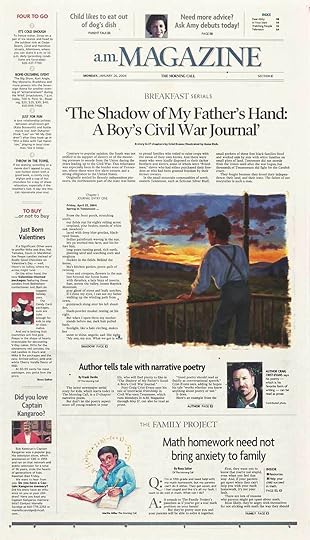

Sample pages of two Breakfast Serials stories, published in local newspapers nationally. The Shadow of My Father’s Hand, written by Craig Crist-Evans, illustrated by Anna Rich, is shown as published in The Morning Call in 2006. Long Road Home, written by Katherine Paterson and illustrated by Emily Arnold McCully, is shown as published in the Minnesota StarTribune in 2005. Click on the image to see a larger version.
A reader wrote: “I love what I have read so far. I have not been reading lately, and Breakfast Serials has me enthused about reading again. I can’t wait to read more.”
Another: “My name is Katie M. I am nine years old and going into fourth grade … I would really enjoy it if you put more stories in the paper like that. I make my dad buy the paper every day.”
And another reader: “Please keep Breakfast Serials coming. I have dug madly through the paper recycling bin upon realizing I missed a segment when out of town.”
From the publisher: “The Detroit News has published Breakfast Serials for five years. [It] continues to grow in popularity and has increased our general readership, in addition to reaching more than 25,000 students in schools every week.”
There are plenty more responses to Breakfast Serials, too numerous to cite here.
But one incident I can’t resist including. I was back East, riding the New York Subway. As we raced along through the underground tunnel, me clinging to an overhead strap, I realized the man sitting in front of me was reading the New York Post, a Breakfast Serials story, The Secret School. Oh, how I was tempted to lean forward to say, “I wrote that.”
Starting in 2008, our country experienced a huge national cultural shift: the internet, along with social media, had come along. One of the results: The number of local newspapers began to decline in large numbers. Since that time, 2,500 local newspapers in the United States have shut down. That waning continues today. Moreover, the number of readers in the nation has also declined to a radical degree. One result: much less access to Breakfast Serials’ illustrated stories.
While there are still some newspapers that continue Breakfast Serials, it is nothing like it used to be.
Just as Breakfast Serials followed readers to newspapers for decades, now, in 2025, we’re bringing a library of 25 original serial stories to Substack, where 50 million active subscribers are already discovering our stories and ideas.
Find Breakfast Serials on Substack.
The story of Breakfast Serials to be continued next week.
September 2, 2025
2025 Summer Blog Series: Summer Summary
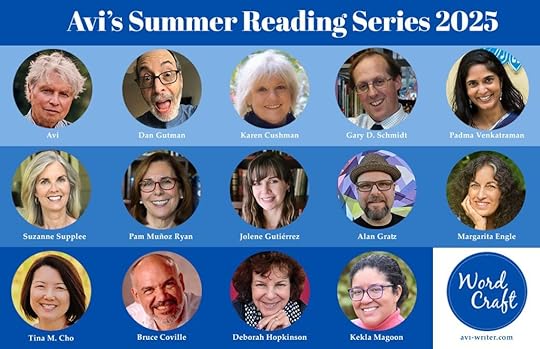
During this past summer I asked my writer friends / colleagues to answer this question: “What’s your favorite strategy for encouraging young people to read?”
While I strongly encourage you to read each of the replies — they are much richer than my summary — here is my sense of what I felt the essence of what each author suggests.
Avi: Read aloud to young and old. In class, at home, every day, bedtime, anytime.
Dan Gutman: Match high interest to what your young reader’s interests are. E.g., if he / she loves basketball, then offer a book about basketball.
Karen Cushman: Always offer the very best written books.
Gary Schmidt: “Do we want our kids to read? Model it. Let them see you read.”
Dr. Padma Venkatraman: Create a special place where kids can feel safe, secure, where they can read at their own pace.
Suzanne Supplee: As a teacher, she required students to choose a book, any book, and read it purely for pleasure.
Pam Muñoz Ryan: Provide stories that are fast-paced, mysterious, or dramatic.
Jolene Gutiérrez: A librarian, she helps readers find a book that feels comfortable to them.
Alan Gratz: Provide books that tell the truth, which take the young reader seriously.
Margarita Engle: Invite kids to choose any book that they want to read. Focus on the feelings the book inspires, not what answers it might give.
Tina M. Cho: Provide diverse books in which young readers can see themselves.
Bruce Coville: Offer books that are funny, sometimes with a touch of the gross, which provide a good time.
Deborah Hopkinson: Offer nonfiction that is grounded in evidence and fact, which provide the truth about real lives.
Kekla Magoon: “Let kids engage with a book the way they want to, not the way you think they’re supposed to.”
Again, I urge you to read the full entries for even more ideas.
August 26, 2025
2025 Summer Blog Series: Kekla Magoon
From Avi: As I have for the last three summers, (summer of 2024, summer of 2023, summer of 2022) I’ve invited 13 admired authors to write for my blog for the next three months. I hope you’ll tune in each Tuesday to see who answered this year’s question, which we hope provides you with inspiration. And by the end of the summer, you’ll have new authors to follow!
What’s your favorite strategy for encouraging young people to read?
One of the most gratifying things that’s ever happened to me in my career occurred after a school author visit, signing books at the front of the auditorium. A young man hovered at the back of the line. He was a short, stocky Black sophomore, shuffling his feet and looking for all the world like he didn’t want to be there. He waited until everyone else had gone through the line, and then he approached. As he held out his copy of the book for me to sign, he said quietly, “This is the first book I ever finished.”
It’s difficult to describe the little storm that happened in my heart after he spoke, but if you’ve ever spent time working with kids or teens—whether as a teacher, librarian, author, parent, or volunteer—you probably can recall the thrill that strikes in the rare moments when you really reach one of them. It had never occurred to me that such a thing was even possible, that my work could be That Book for someone.
“That’s amazing,” I said, keeping my surface calm somehow. “Do you think you’d like to try reading another one?”
He said yes, so I offered a few recommendations, a couple book titles as well as the names of some Black authors who held meaning for me. Then he went on his way.
It was the first time this had happened to me, and it didn’t occur to me to ask him why. Why was this the first book that you finished? Note that he didn’t say it was the first book he’d ever read, or the first book he ever picked up, but it was the first one that made him interested enough to actually finish. What about it made it The One?
The next time this happened, with a different young Black man in a different school, the moment was almost identical, from the slow reluctant sidle to the quiet proud admission and the “yes, I’d like to try again,” but this time I found the wherewithal to ask, “What made this a book you wanted to finish?”
He said, “The characters felt like people I know, and I wanted to know what happened to them because it mattered to me.” The book was How It Went Down, a multiple-viewpoint novel about the controversial shooting of a Black teen by a white man, something I wrote in response to and in conversation with the Black Lives Matter movement.
This story leads me to the first of three thoughts I’d like to share about encouraging young people to read: Our classroom curricula and our library shelves must contain a diverse range of books about people from many different cultures and communities. For both of these boys, discovering this book was the first time they felt like they saw themselves in the literature they were being taught. It was the first time they realized that books could be about them and relevant to them. We need more of that.
Since I became an aunt a few years ago, one of my greatest joys has been gifting my nephew with signed picture books. He loves animals, so I gave him Kate Messner’s Over and Under the Canyon picture book, which tells a story about the desert with many animals and nature elements highlighted in the illustrations. At the back of the book, there’s a glossary of all the mentioned animals with more details about them. This is my nephew’s favorite book, yet he steadfastly refuses to read the story. Instead, he loves reading the animal glossary over and over. I have read it out loud to him in its entirety dozens of times, and it’s maddening because there’s also a beautiful story in the first half of the book that I would like him to discover and enjoy. But reading this way with him has taught me so much, namely that forcing him to read the book the way I prefer to would take the joy out of it for him.
This brings me to my second thought about how we can encourage reading: Let kids engage with a book the way they want to, not the way you think they’re supposed to. There are many ways to enjoy a book. Some people flip to the ending to read it first while others find spoilers enraging. To each their own!
I applied this lesson to my writing when I wrote my non-fiction YA book, Revolution in Our Time: The Black Panther Party’s Promise to the People. The book is a hefty 400 pages, and it includes nearly 200 images, with an item of visual interest appearing on nearly every spread. My goal was to ensure that a reader who wanted to pick up the book and simply flip through the pictures would get a fairly complete summary of the story through the images and captions.
For my final anecdote, I’ll draw on my own experience as a reader. I’ve often found it really difficult and even painful at times to talk about my favorite books and what I like to read. It comes up a lot as an author! But I often run up against a feeling of shame about some of the books I like to read. Where does this shame come from? Partly it comes from my shyness about revealing myself—a person’s reading preferences can actually be an intimate detail to share. But another part of it comes from the labels we as a culture, we as educators, we as a literary community put on certain books. People who love books tend to value literary quality, which is not itself a bad thing, but it can do some harm when it comes to how we talk about the many books that don’t meet this standard. For example, why do we feel compelled to talk about certain books as “guilty pleasure” reads?
So, my final thought about encouraging reading is: Celebrate whatever books a young person wants to read. Find out why they love them. Be a voice in their lives who finds value in all kinds of stories rather than one who insists that they read books you personally deem “good.” And, yes, this can apply to content as well as literary merit. Celebrate the kid who wants to read about death and destruction, the one who will only read graphic lit, the one who obsesses over horror, the one who can’t stand sad endings or is overwhelmed by anything too emotionally serious. We need the books we need for reasons we can’t always understand, and it is healing to have spaces where that is recognized as not merely okay but truly wonderful.
Happy reading!
Particulars Kekla Magoon
Kekla Magoon photo: Bich Van Pham
Facebook Instagram Bluesky Home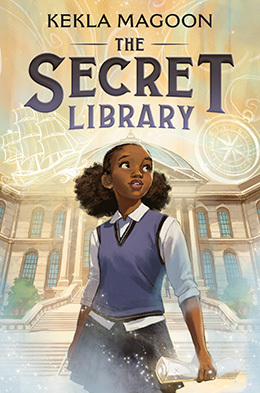 The Secret Library
The Secret Library 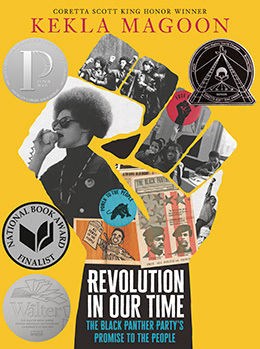 Revolution in Our Time
Revolution in Our Time Kekla Magoon writes novels and nonfiction books for children and teens, often on themes of identity, community, empowerment and social justice. She received the 2021 Margaret A. Edwards Award, a body of work recognition for her significant and lasting contribution to young adult literature. She is also a recipient of the Boston Globe-Horn Book Award, a Michael L. Printz Honor, four Coretta Scott King Honors, two Walter Award Honors, and an NAACP Image Award, in addition to being a finalist for the National Book Award. Kekla holds a B.A. from Northwestern University and an M.F.A. in Writing from Vermont College of Fine Arts, where she is also faculty emerita.
Serialization, Breakfast Serials, and Substack
In 1835, Charles Dickens, aged 24, was a working UK Parliament reporter and freelance reporter, when the English publisher Chapman & Hall began to issue a series of illustrations — “Cockney Sporting Plates” by artist Robert Seymour. Dickens was engaged to provide written commentary for the art. But after two art episodes, Seymour died. Dickens, however, was asked to continue the narrative and thus created The Posthumous Papers of the Pickwick Club, which was serialized (each installment “to be continued”) from March 1836 to November 1837.
The Pickwick Papers — as it became known — became a literary sensation, launched Dickens as a major writer, and established serial fiction as a literary staple that became enormously popular, used by many writers and publishers.
At the time — the 19th century — mass literacy was rapidly expanding, printing was becoming more efficient, and serial novelization made the cost of book reading much lower for the general public. Moreover, it transformed reading from an individual endeavor to a social phenomenon, with huge numbers able to simultaneously share a text.
Was serialization popular? Consider this abbreviated list of literary staples, all of which are now considered literary classics, all of which were serialized.
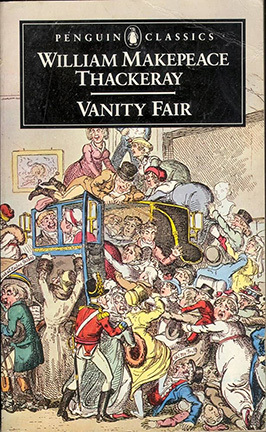
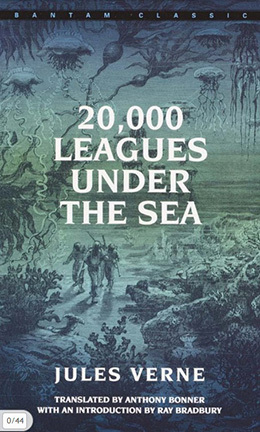
 The Count of Monte Cristo
by Alexandre Dumas (1844)
Vanity Fair
by William Makepeace Thackeray (1847)
Uncle Tom’s Cabin
by Harriet Beecher Stowe (1851)
Madame Bovary
by Gustave Flaubert (1856)
The Woman in White
by Wilkie Collins (1859)
Crime and Punishment
by Fyodor Dostoevsky (1866)
20,000 Leagues Under the Sea
by Jules Verne (1870)
Middlemarch
by George Eliot (1871)
Anna Karenina
by Leo Tolstoy (1875)
The Portrait of a Lady
by Henry James (1880)Treasure Island by Robert Louis Stevenson (1881)
The Count of Monte Cristo
by Alexandre Dumas (1844)
Vanity Fair
by William Makepeace Thackeray (1847)
Uncle Tom’s Cabin
by Harriet Beecher Stowe (1851)
Madame Bovary
by Gustave Flaubert (1856)
The Woman in White
by Wilkie Collins (1859)
Crime and Punishment
by Fyodor Dostoevsky (1866)
20,000 Leagues Under the Sea
by Jules Verne (1870)
Middlemarch
by George Eliot (1871)
Anna Karenina
by Leo Tolstoy (1875)
The Portrait of a Lady
by Henry James (1880)Treasure Island by Robert Louis Stevenson (1881)When I was a boy, growing up in New York City, my parents’ daily newspaper of choice was the NY Times, which, aside from its sports pages, I found dull. But occasionally into the house came The New York Herald Tribune, which not only had daily comic strips, but ran serialized animal stories by the American author Thornton W. Burgess. I adored those stories (Blackie the Crow, Lightfoot the Deer) and reading them led me to the local used bookstore where I would buy volumes of the complete stories, for twenty-five cents each. Those stories taught me to become a lifelong reader. Understandably, I never forgot the enormous pleasure those serial stories gave me. And I have no doubt they influenced my Poppy books.
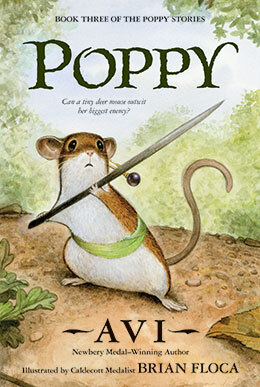
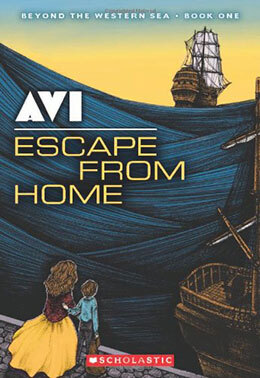
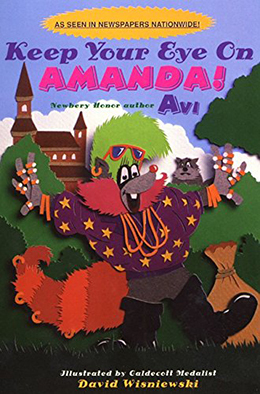
In 1995, when visiting schools, I noticed that middle school readers were enjoying long novels (e.g., Stephen King) on their own, far outside of school curriculums. I set out to write such a long book using as my model the great Victorian serialized novels, such as above. My Beyond the Western Sea was the result. An adventure tale (of 675 pages), it featured short, cliff-hanging chapters of a hopefully engrossing story. It worked. Readers asked for more!
In 1996, while living in Boulder, Colorado, with access to a small-town newspaper, I wondered if I could take the next step and write a serialized story that could be published, chapter by chapter, in the local press. Keep Your Eye on Amanda, illustrated by Janet Stevens, was the result. And that in turn led to the creation of an enormously successful publishing venture, Breakfast Serials.
Here is a link to Breakfast Serials on Substack: breakfastserialsinc.substack.com
This story of Breakfast Serials to be continued next week …
August 19, 2025
2025 Summer Blog Series: Deborah Hopkinson
From Avi: As I have for the last three summers, (summer of 2024, summer of 2023, summer of 2022) I’ve invited 13 admired authors to write for my blog for the next three months. I hope you’ll tune in each Tuesday to see who answered this year’s question, which we hope provides you with inspiration. And by the end of the summer, you’ll have new authors to follow!
What’s your favorite strategy for encouraging young people to read?As I write this, it’s the height of summer, one of my favorite times to read. Sometimes, as I did when I was growing up, I’ll find a story so delicious I’ll stay up into the wee hours just to find out how it ends. Pressing my face to the screen in the dead of night, I often wonder if there are other late-night summer readers out there.
Usually, it’s a novel that keeps me up at night. And while I do write middle grade novels, including the upcoming WWII historical fiction Take Cover (Scholastic, 2026), I also love to write (and read) nonfiction.
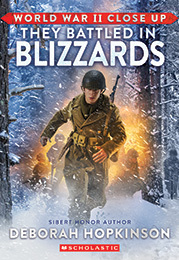 When writing nonfiction I try to keep in mind that many young readers (and adults too) prefer fantasy, realistic fiction, mysteries, or science fiction. So I try to use the tools of fiction to engage readers of all ages, even when the subject matter is challenging or disturbing. That was a certainly a factor in my new book, They Battled in Blizzards (Scholastic Focus, 2025) Out in September, it’s long form nonfiction about the horrific Battle of the Bulge, the largest battle in US military history.
When writing nonfiction I try to keep in mind that many young readers (and adults too) prefer fantasy, realistic fiction, mysteries, or science fiction. So I try to use the tools of fiction to engage readers of all ages, even when the subject matter is challenging or disturbing. That was a certainly a factor in my new book, They Battled in Blizzards (Scholastic Focus, 2025) Out in September, it’s long form nonfiction about the horrific Battle of the Bulge, the largest battle in US military history.
As I tell students at author visits, writing about something is a good way to learn about it. I had long shied away from tackling this massive six-week battle in the Ardennes forest which began with a surprise Nazi attack on December 16, 1944. And, in truth, it was one of the hardest books I’ve ever written.
Growing up, I thought the best parts of history textbooks were the “shaded boxes,” the stories that made past events come to life. With that in mind, one strategy I use in writing long nonfiction is to begin with a teaser, or prologue, that brings readers straight into the action even before they reach the table of contents.
History happens to real people, and in telling the story of the horrific conditions that befell young American soldiers in the Ardennes during that bitterly cold winter, I relied on oral histories, memoirs, and unpublished accounts, as well as photos generously provided by the families of veterans.
When I write nonfiction, I think of myself less as a creator and more as a museum curator. I try to select stories, photos, illustrations, and quotations that provide historical context and help readers imagine what that experience might have been like for those who were there.
That’s one reason I try to feature as many different voices as possible. This kind of close-to-the-ground history is only possible when ordinary people have had the courage to record an oral history or write down what happened to them. I hope by encountering a diversity of voices, readers will see themselves or their own family here; and also be encouraged to do oral histories with their loved ones. I also always include a note to readers urging them to tell their own stories too.

They Battled in Blizzards introduces readers to real people: women who served as nurses; Victor Brombert, a Jewish refugee who joined the US Army and later became an esteemed professor; Jose Lopez, a Latino immigrant awarded the Medal of Honor; Black servicemen like famed children’s book illustrator Ashley Bryan who served in Europe (with an accompanying remembrance by Dean Schneider); and Medgar Evers, who drove for the Red Ball Express.
Medgar Evers vowed to return home after the war and fight for civil rights. Assassinated in 1963 at age thirty-seven, he was buried with full military honors in Arlington National Cemetery. In spring 2025, the Trump administration removed the finding guide for Black American heroes on the cemetery’s website. Many wrote to protest, including me. It hasn’t been restored.
I believe the best way I can encourage young people to read nonfiction is to try to tell vital stories, grounded in evidence and fact, with the hope that the next generation will have a better understanding of the past — even when there are those determined to erase or discount the contributions of extraordinary Americans.
Particulars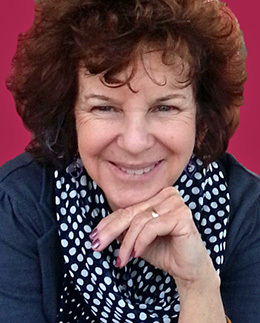 Deborah Hopkinson Facebook Instagram Bluesky Home
Deborah Hopkinson Facebook Instagram Bluesky Home  They Battled in Blizzards
They Battled in Blizzards Deborah Hopkinson is the award-winning author of seventy books for young readers including picture books, middle grade historical fiction, Little Golden Book biographies, and long form nonfiction. Her titles have been honored with the Oregon Book Award, the SCBWI Golden Kite Award for Picture Book Text, the Jane Addams Children’s Book Award, and the Green Earth Environmental Award.
August 12, 2025
2025 Summer Blog Series: Bruce Coville
From Avi: As I have for the last three summers, (summer of 2024, summer of 2023, summer of 2022) I’ve invited 13 admired authors to write for my blog for the next three months. I hope you’ll tune in each Tuesday to see who answered this year’s question, which we hope provides you with inspiration. And by the end of the summer, you’ll have new authors to follow!
What’s your favorite strategy for encouraging young people to read? Start Where the Readers AreWhatever your aspirations for a book or story are, it will not have any effect if you can’t get kids to read it! To make that happen, you need to start where the readers are, not where you want them to end up.
To put it another way, if you are standing on top of the mountain of good taste and shouting down to the kids at the bottom who are racing around and having a good time, simply calling, “Come on up, the view is inspiring” is not going to have any effect. To draw in the reader, you have to start at the bottom of the mountain and give them a reason to join you on the journey up.
One of the best ways to do this is to begin with something that will evoke a laugh. Kids love to laugh. So if you can get a chuckle on the first page, or even better, with the first line, you’ve set the hook.
Let me give you a couple of examples.
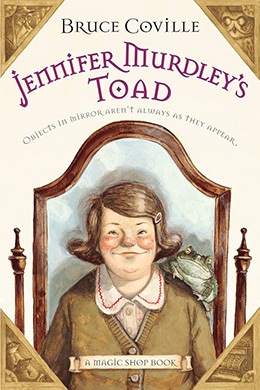 Jennifer Murdley’s Toad is about a girl who is homely. Yeah, yeah — grown-ups like to say “All children are beautiful.” Sadly, kids know that this is a lie … and the ones who know it best are the ones that don’t match our culture’s standard image of pretty. So the story is about a girl who feels the pain of knowing she is not beautiful.
Jennifer Murdley’s Toad is about a girl who is homely. Yeah, yeah — grown-ups like to say “All children are beautiful.” Sadly, kids know that this is a lie … and the ones who know it best are the ones that don’t match our culture’s standard image of pretty. So the story is about a girl who feels the pain of knowing she is not beautiful.
Tell that to a kid and see how far you get.
But here’s the first line: “If Jennifer Murdley hadn’t been forced to wear her bother’s underpants to school that day, the whole thing might never have happened.”
This announces that there is some fun in store. (Words like fart, booger, naked, and underwear are catnip for young readers.) For the child reading the story, any “lesson” is ancillary to the main reason for reading the book, which is to have a good time.
 Here’s another one: The Dragonslayers is a book that deals with female empowerment, and also with the destructive peer pressure exerted on boys to not try too hard, or be too good, for fear of being called out as a geek or a brown-noser. But there’s no hint of that in the opening line, “Do you have the lizard snot?”
Here’s another one: The Dragonslayers is a book that deals with female empowerment, and also with the destructive peer pressure exerted on boys to not try too hard, or be too good, for fear of being called out as a geek or a brown-noser. But there’s no hint of that in the opening line, “Do you have the lizard snot?”
If you start where the kids are and let them know up front that there’s a good time to be had, then they will happily follow you as you lead them up the mountain to see the wider and grander view.
Particulars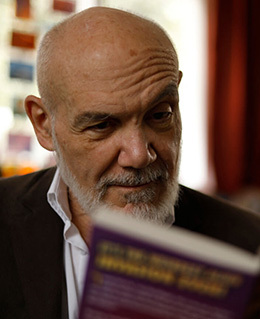 Bruce Coville Facebook Instagram Bluesky Home
Bruce Coville Facebook Instagram Bluesky Home  The Dragonslayers
The Dragonslayers I’ve been writing stories for kids for over 40 years. In that time I’ve published over 100 books, including My Teacher is an Alien, Into the Land of Unicorns, and Jeremy Thatcher, Dragon Hatcher. Take a flight over to Bruce Coville’s website. There are books, audio books, television shows, and more to explore.
August 4, 2025
2025 Summer Blog Series: Tina Cho
From Avi: As I have for the last three summers, (summer of 2024, summer of 2023, summer of 2022) I’ve invited 13 admired authors to write for my blog for the next three months. I hope you’ll tune in each Tuesday to see who answered this year’s question, which we hope provides you with inspiration. And by the end of the summer, you’ll have new authors to follow!
What’s your favorite strategy for encouraging young people to read?Short answer: For my day job, I’m a teacher. So I make my students read. HA!
But really, to encourage kids to read, I deepen my relationship with each child to find out their interests and then pair them with books they will find irresistible. During our whole group read alouds, I selectively choose books that I think the whole class will love. And it shows because they later pick it up to read or look at. (I teach kindergarten.)

But for the reluctant reader like my son was, I have to get them curious in a book. I remember sitting in bed with him and reading the first couple of chapters to whet his appetite. Once he was hooked like a fish with a yummy worm, I knew he’d read it on his own to completion. This also sends me on a tangent. I recently read data this summer that stated many parents, especially Gen Z parents, aren’t reading to their children. As a teacher, I see the results. There are soooo many benefits to reading to your child, even in their tween years! Make book time, rather than screen time.
Another tip to hook readers, I mean encourage readers, is to give them books in which they see themselves. My books feature diverse characters. I’ve noticed kids pay attention and sit up a little straighter when they see themselves in a book. My forthcoming picture book, The Princess and the Grain of Rice (Feb. 2026) is a Korean retelling of one of my favorite fairy tales, The Princess and the Pea. For one thing, why stick a yucky pea in a story?! No, really, most fairy tales feature Caucasian princesses with blond hair. My daughter never had a princess book with an Asian character.
In my lyrical middle grade graphic novel, The Other Side of Tomorrow, not only are there diverse characters, but the plot of escaping the North Korean regime moves quickly, and there isn’t a lot of boring descriptions of the setting. That helps too. (Note: I used Avi’s book, Crispin, as a mentor text on writing a novel! It worked because my novel received five starred reviews!)
So, deepen your relationships, whet their appetite, hook them with an irresistible story in which they see themselves, and most importantly, read TO them!
Particulars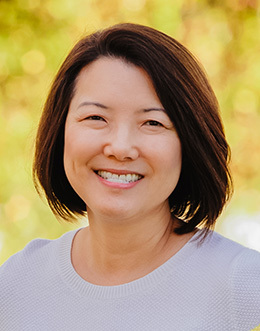 Tina Cho Facebook Instagram Home
Tina Cho Facebook Instagram Home 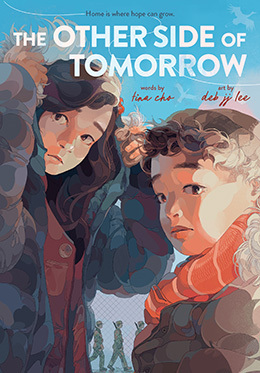 The Other Side of Tomorrow
The Other Side of Tomorrow Tina Cho is the author of the middle grade graphic novel, The Other Side of Tomorrow, illustrated by Deb J.J. Lee (winner of the SCBWI Golden Kite Award, Freeman Book Honor Award, five starred reviews, SLJ Best Graphic Novels List 2024, Kirkus Best Middle Grade 2024, & Booklist Editors’ Choice 2024). She’s also the author of numerous picture books including The Ocean Calls, illustrated by Jess X. Snow (4 starred reviews, Freeman Book Honor Award) and the forthcoming The Princess & the Grain of Rice, illustrated by Honee Jang (Feb. 2026, FSG). After living in Korea for 10 years, she teaches and writes from Iowa.
July 29, 2025
2025 Summer Blog Series: Margarita Engle
From Avi: As I have for the last three summers, (summer of 2024, summer of 2023, summer of 2022) I’ve invited 13 admired authors to write for my blog for the next three months. I hope you’ll tune in each Tuesday to see who answered this year’s question, which we hope provides you with inspiration. And by the end of the summer, you’ll have new authors to follow!
What’s your favorite strategy for encouraging young people to read poetry?
Invite children and teens to walk in the park
sit under a tree
look
listen
enjoy
the natural
rhythms
of nature’s
music.
Invite them to choose any poetry book, funny or serious,
whatever they wish, metered and rhymed, or a novel
born wild, then released
in free verse.
Let young people reach their own answers
to the question: how does this poem
make you feel?
Give them permission to be honest.
There is no right or wrong answer, no pathway, no map.
Each poem can yield various meanings, depending on the age,
mood, experience, and daydreams of the reader.
Please do not ask that other dreaded question:
what does this poem mean?
It’s a challenge that terrifies everyone,
even adults who picture themselves failing to complete
an impossible fairy tale quest.
Assigning only one meaning to a poem
is like spinning straw into gold, it can’t be done,
there’s no alchemy for simplifying
the powerful beauty
of musical language
into something
less entrancing
than honest
emotions.
Show the child how to see rhythmic patterns
of vowel rhymes, and help them find times
when internal rhymes sound
like the chimes of bells
echoing within
open spaces
after line breaks
between stanzas
between pages.
Those open spaces are the magical places
where the minds of a poet and reader
rise up to meet
in midair
both
free
to see
new possibilities, perhaps a poem or sketch
scribbled by a child, in response to the finished verse
printed in a book.
Scatter a treasury of paper, pens, pencils
just in case a wave of inspiration
helps one of the children
or teenagers
feel like answering
a hopeful question:
how does this poem
make you feel?
Your example will be the difference
between a lifetime of metrophobia (the fear of poetry)
and a lifetime in sunlight or shade, reading, dreaming,
and maybe even beginning to scribble the future’s
musical verses.
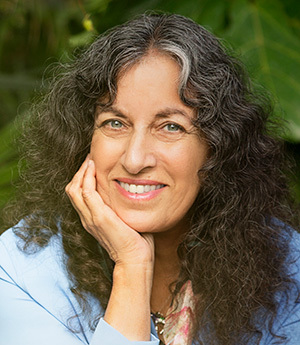 Margarita Engle Home Facebook Instagram
Margarita Engle Home Facebook Instagram 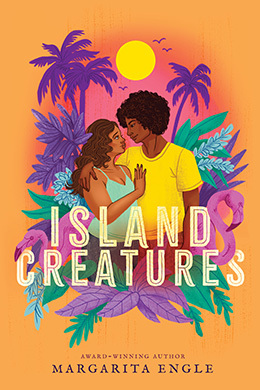
Island Creatures
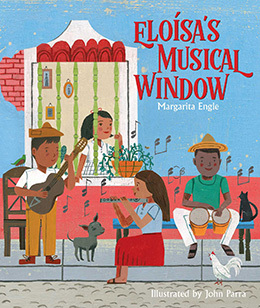
Eloisa’s Musical Window
Margarita Engle is the Cuban-American author of many verse novels, including Wild Dreamers, a Pura Belpré Honor Book that was also long listed for the National Book Award. Wings in the Wild received an International Latino Book Award Gold Medal, and The Surrender Tree received a Newbery Honor. Other awards include Pura Belpré Medals, Walter Honors, Américas Awards, Jane Addams Award, PEN U.S.A., and the NSK Neustadt Prize. Margarita served as the national 2017–2019 Young People’s Poet Laureate. Her most recent picture book is Eloísa’s Musical Window, and her 2025 verse novel is Island Creatures.
Margarita was born in Los Angeles, but developed a deep attachment to her mother’s homeland during childhood summers with relatives on the island. She studied agronomy and botany along with creative writing, and now lives in central California with her entomologist husband and soccer playing Border Collie.
July 22, 2025
2025 Summer Blog Series: Alan Gratz
From Avi: As I have for the last three summers, (summer of 2024, summer of 2023, summer of 2022) I’ve invited 13 admired authors to write for my blog for the next three months. I hope you’ll tune in each Tuesday to see who answered this year’s question, which we hope provides you with inspiration. And by the end of the summer, you’ll have new authors to follow!
What’s your favorite strategy for encouraging young people to read?
Teachers and parents often tell me that my novels are great for getting reluctant readers to love books. Which is very flattering! I was a reluctant reader as a boy myself, and I’m happy to bring like-minded young people into the book-loving fold.
I have a lot of strategies for keeping even the most reluctant of readers on the edges of their seats. Getting to the adventure as quickly as I can — in the first few pages, if possible. Short chapters with cliffhanger endings. Dynamic and unusual settings. Characters who are at once unique and relatable. High stakes stories — real life and death stuff.
Beyond all those techniques though, there’s one overriding thing that has been a hallmark of all my most successful books: I always take my young readers seriously.
As a kid, I couldn’t stand it when adults talked down to me, or didn’t tell me the whole truth. And I knew when it was happening. All kids do. They have a sixth sense for when adults are giving them the run-around. And there is no surer way to lose a young reader. Lie to them, or cover things up, and they’ll drop your book and never come back. But tell them the truth — even better, the hard truth — and they will hang on your every word.
When I first understood as a young boy that I was mortal — that eventually this awesome thing called life was going to come to an end — I was horrified. I was so upset that I would stay up at night, afraid that if I closed my eyes I would die in my sleep. Even more scandalous to me was that all the adults in my life just accepted that they were going to die. How could everybody just be cool about this? Why wasn’t everyone freaking out every minute of every day?
My parents quickly grew tired of my fears. “You’re not going to die for a long time,” they would tell me — as if the fact that it was many years down the road was any consolation at all! Dying tomorrow, or dying eighty years from now — what was the difference? It still meant that life would one day come to an end, and I just couldn’t accept that. But no one took my fears seriously.
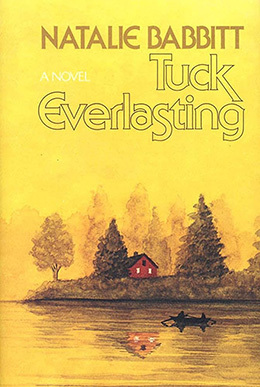 Until I read Natalie Babbitt’s Tuck Everlasting in the seventh grade.
Until I read Natalie Babbitt’s Tuck Everlasting in the seventh grade.
I picked the book up as reluctantly as I picked up every other book. But here, to my surprise, was a story about the cycle of life and death. About a family of people who’d actually beaten death — and wished they hadn’t. Winnie, the main character, has a decision to make: drink from a spring that will grant her eternal life, or experience life the way everyone else does, by growing older and trying to enjoy every distinct stage of it along the way.
Now, me, I would have drunk the spring water and become immortal in a heartbeat, no matter what Ma and Pa Tuck told me. (And I still would!) But the important thing was that here, at last, was an adult taking my questions about life and death seriously. I may not have agreed with the decisions of the main character, but I felt seen in a way that no other book had made me feel seen before.
It was a profound experience, and one I’ve tried to duplicate every time I’ve written a book for young readers. I know that each new book I’m writing won’t be that kind of story for everyone who picks it up. For most of my readers, my stories will just be page-turners they can’t put down. And that’s win enough! But somewhere out there is a reader who is struggling to understand the Holocaust, or terrorism, or war, or refugees, or bullying, or climate change, or whatever it is I’m writing about, and for that young person, my book may be the first time an adult has said, “I see you. I hear you. I may not have all the answers, but let’s talk about it.”
That’s a big responsibility, and one I don’t take lightly. Because even though kids want to know everything, and I want to tell them nothing but the truth (to borrow a phrase), they’re often not ready for the truth. Not all of it. So I tell them what they can handle, and leave the rest for them to discover as they get older.
Or, as the great Kate DiCamillo says, “Tell the truth, but make it bearable.”
That’s the best strategy I’ve ever heard for getting young people to read.
Particulars Alan Gratz Home Facebook Instagram
Alan Gratz Home Facebook Instagram 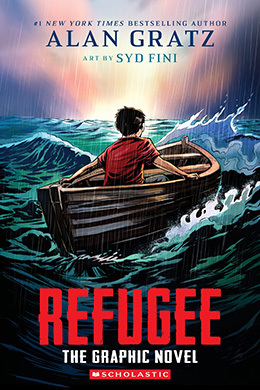
Forthcoming books
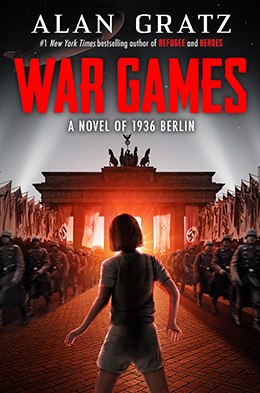
Alan Gratz is the #1 New York Times bestselling author of more than twenty novels, graphic novels, and novellas for young readers, including Heroes, Two Degrees, Captain America: The Ghost Army, Ground Zero, Refugee, Allies, Resist, Prisoner B‑3087, and Ban This Book. A Knoxville, Tennessee native, Alan is now a full-time writer living in Portland, Oregon with his family.
Avi's Blog
- Avi's profile
- 1703 followers



